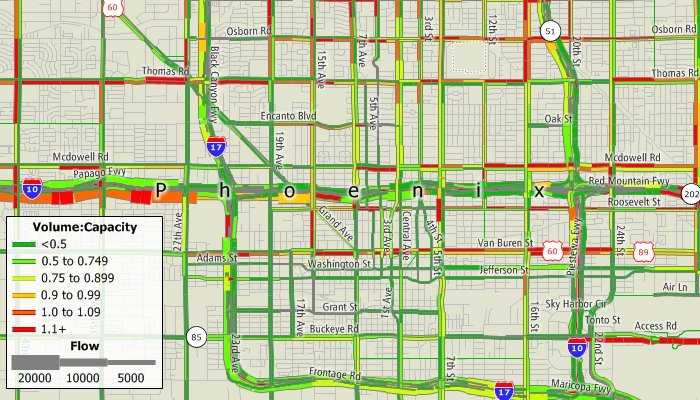Assignment models are used to estimate the traffic flows on a network.
Traffic Assignment Models estimate the flow on a street or highway network using an input matrix of flows that indicate the volume of traffic between origin and destination (O-D) pairs. They also take input on the network topology, link characteristics, and link performance functions. The flows for each O-D pair are loaded onto the network based on the travel time or impedance of the alternative paths that could carry this traffic. The traffic assignment model predicts the network flows that are associated with future planning scenarios, and generates estimates of the link travel times and related attributes that are the basis for benefits estimation and air quality impacts. The traffic assignment model is also used to generate the estimates of network performance that are used in the mode choice and trip distribution or destination choice stages of many models.

Standard outputs of a traffic assignment are the link flows, volume-to-capacity ratios, congested travel times, and congested speeds.
Transit Assignment Models are used to estimate the number of passengers that use transit segments and routes in a transit network as a function of transit level of service and fare. These models take as input an O-D matrix of passenger demand and a transit network, and produce transit segment, stop level, route level, and aggregate ridership statistics.
TransCAD Transportation Planning Software provides the widest array of traffic and transit assignment procedures that can be used for modeling urban traffic.
Home | Products | Contact | Secure Store